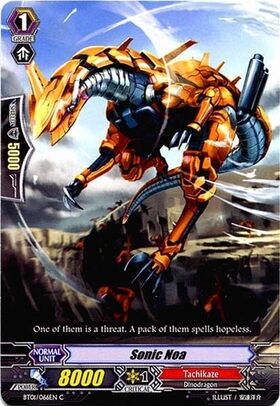I'm here to bust the myths about rushing. First off, it would help to define what exactly a "rush" is. People always talk about "Grade 1 rush" and "Grade 2 rushing," and they are just as they sound; rushing while their Vanguard is Grade X. A "rush" is denoted by filling your field with units in order to push the opponent to high damage amounts while the game is in the early stages. For example, a "Grade 1 rush" would look something like this:




It is a "Grade 1 rush" as your Vanguard is Grade 1, and you have filled your field with units that are all able to hit the opponent's Vanguard. The basic idea behind this is that, so early in the game, the opponent's hand won't contain the necessary cards to successfully guard all of the attacks, resulting in a massive amount of early damage, giving you a huge edge in the rest of the duel, or your opponent will guard all/most of the attacks, severely crippling their hand for the rest of the game. Alternatively, a "Grade 2 Rush" would look something like this:





Again, every unit on the field is able to hit the opponent's Vanguard, but due to two units being boosted, your rush is also less susceptible to being stopped because of the opponent hitting damage triggers. With the introduction of Legions (or Archetypes, whatever you call them), rushing has become more potent, due to Kay-clone units (7,000 Power Grade 1's that attack with 10,000 Power) and Bedivere-clones (9,000 Power Grade 2 units that attack for 12,000 Power) allowing for more units to rush with, and a 7,000 Power booster behind a Bedivere-clone makes a 19,000 Powerline, which is a 3-stage guard against the increasingly-common 9,000 Power Grade 2 Vanguards.
Due to this increase in power of rushing, its no wonder that its one of the most desirable opening plays in the game, and that lots of players flock to it and worship it. However, due to its success, plenty of players often think they've found some hidden gem of a strategy, a win-it-all deal guaranteed to get them 1st place in whatever tournament scene they frequent.
"But CrazyCat, if its so good, why did you say it isn't a real strategy?" Excellent question! Because, outside of clans like Spike Brothers, rushing is entirely luck dependent. You can't sit down and go into any given game and say "I'm going to rush them this game." Rushing on average takes a 5-6 card commitment, and those are very specific cards. Lets say you go first, meaning the first time you get to attack is your Grade 2 ride. You open with 6 cards, ride, possibly guard during the opponent's turn, then draw the next turn and ride again. You have 7 cards at your disposal, and almost all of them have to be the exact cards you need to make the rush go off; A Grade 1 to ride, a Grade 2 to ride, two Grade 2s (or a Grade 1 and a Grade 2) to call as attackers, and at least 1 booster. That's not even counting the fact that one of those cards should be a Grade 3 so you can ride properly. There are just as many Grade 3's and triggers in your deck as there are Grade 1's and 2's (probably more, in fact), so the odds of drawing into the exact Grade 1's and 2's you need, in multiples, that early in the game are extremely low.
Now, I don't want any confusion coming from this article, so let me reiterate: Is rushing bad? No, of course not. Rushing is extremely powerful, and I would recommend rushing if the situation allows. However, it is not a strategy you can rely on, nor one you can cite as a countermeasure or means of counterplay against certain decks. There is a massive difference between saying "I rushed him" and "You should rush him." I can't convey the number of times I've heard people say "X deck is bad, all you have to do is rush it since its weak really early." This is a very popular argument people try to use when Link Joker comes up, due to the deck's incredibly powerful late game but almost nonexistent early and mid game.
Tl;dr: Rushing is no more of a strategy than double critting or 6th Damage healing. Is it part of the game and very strong when it happens? Yes. Can you control it or actively accomplish it? No.
Strategy is defined as:
ReplyDelete"the art of devising or employing plans or stratagems toward a goal".
I have yet to find a mention of a time table in any definition I have found. It doesn't state strategy must be formed 5 hours, 5 minutes, or 5 seconds before the implementation. So to say it's not a strategy simply because you can't depends to do it every time is a fallacy, and in all honest, a misnomer.
Rushing is indeed a strategy. It's exactly what clans like Aqua Force and the starter Tri-holl Dracokid do. It doesn't cease being a strategy simply because you can't do it all the time or the situation isn't ideal.